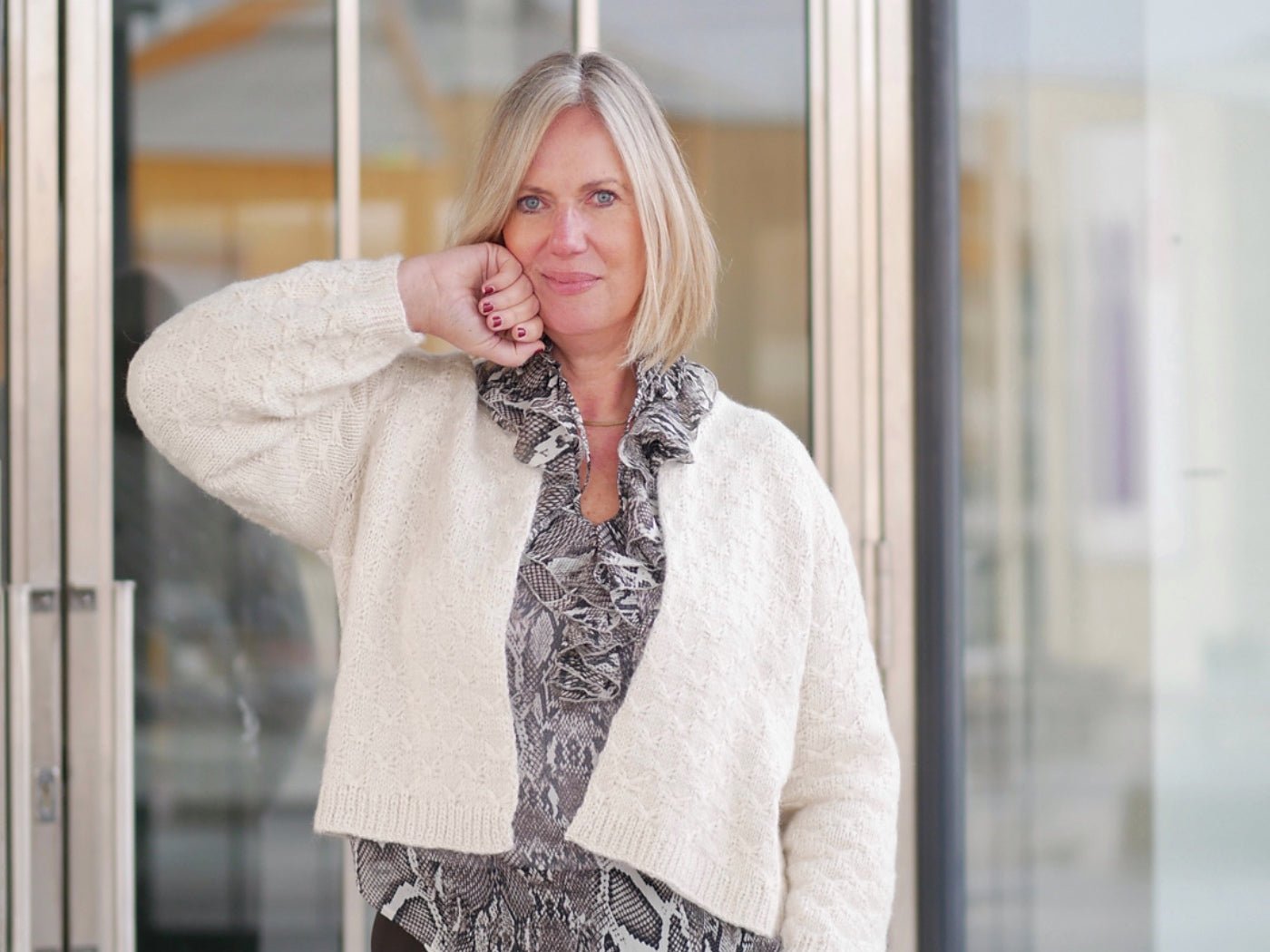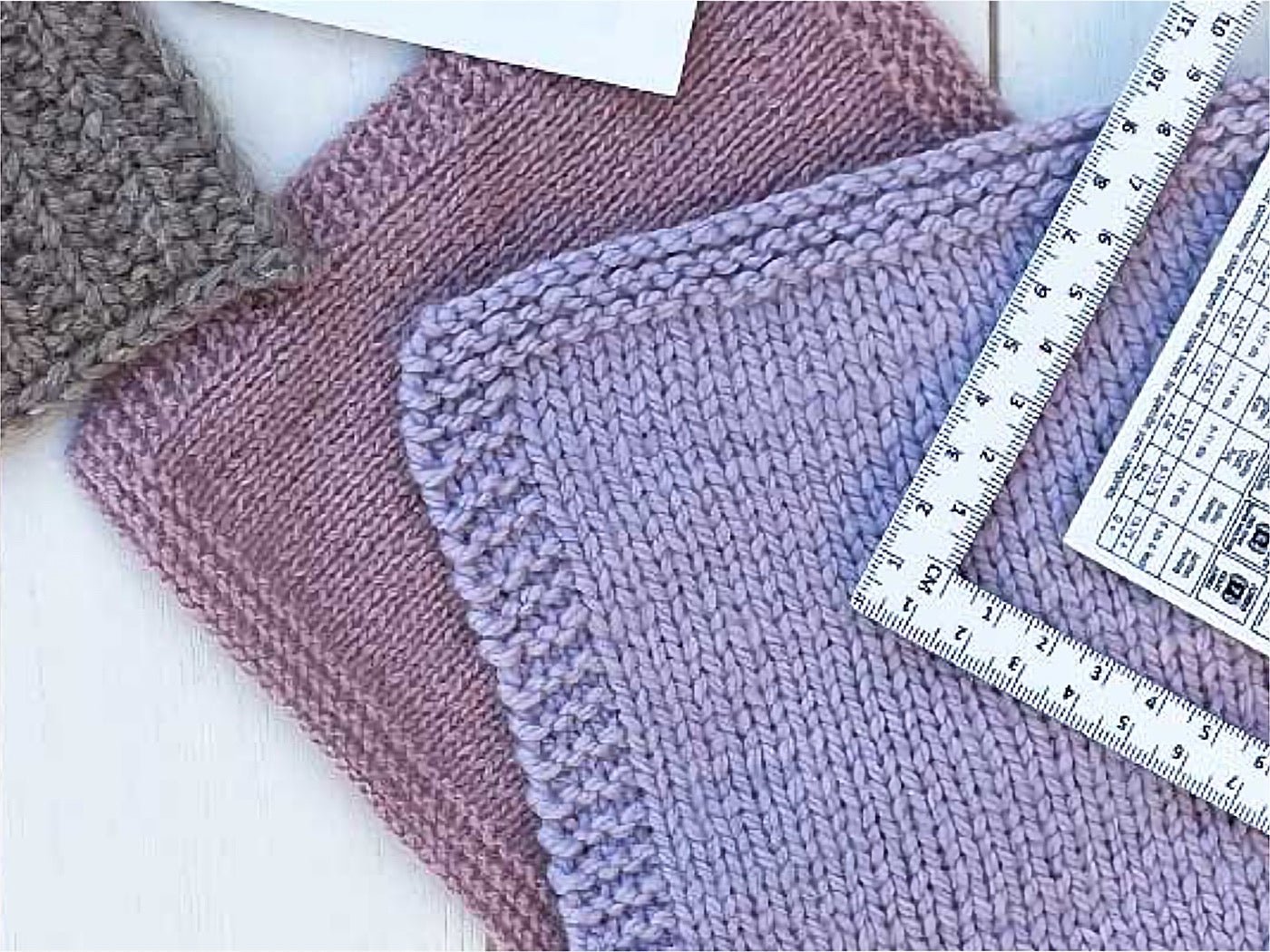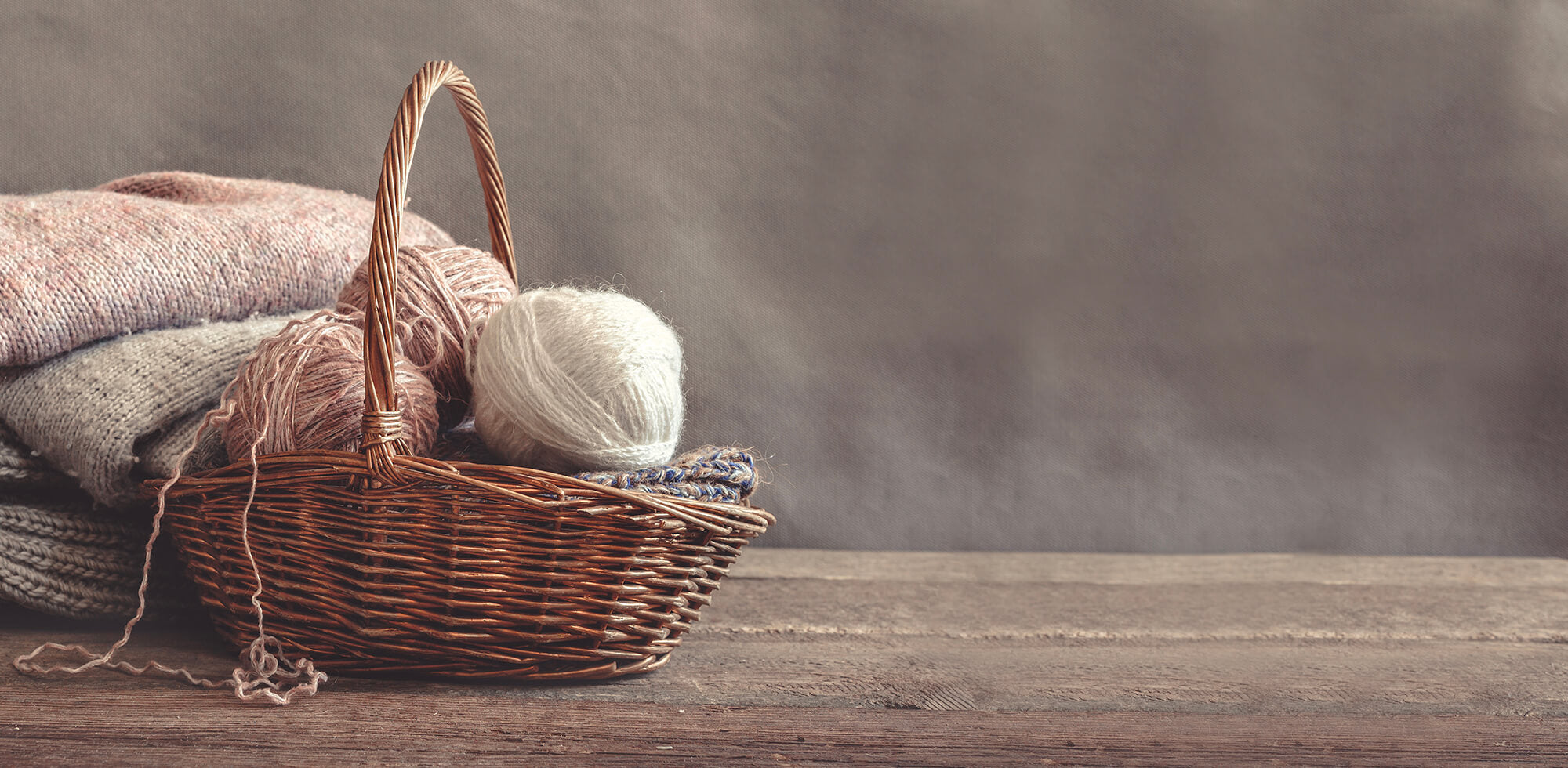By Claudia Ostrop
Scarves and shawls have their place in the world of knitting - after all, you just can't have too many of them, right? A large triangular shawl, a delicate scarf or a cuddly cowl: do you have a favourite?
Today, we take a look at the different shapes and how each one is created.
The One Everyone Knows: the Scarf
Everyone must have had one as a child or maybe has even knitted one themselves: a simple scarf. Sometimes longer, sometimes shorter, rather wide or narrow, with fringes or without; the classic scarf is usually knitted from one end to the other. The stitches are cast on at one edge and the knitting is done back and forth in rows. A scarf can be as long as 6.5 feet (2 metres) depending on whether you want to wrap it around your neck or let the ends hang down a long way.
The beginning and end can also be pointed or slanted. For example, you can knit a scarf as a parallelogram: Instead of simply knitting back and forth in rows, one stitch is increased at the beginning of every second row and one stitch decreased at the end. The scarf then has pointed ends instead of square edges. A scarf can also be knitted as a tube, i.e. in the round: Then the front and back are identical.
Our designs “Emerald Scarf”, “Neci” and Yulo are great examples of classic scarves.

Rectangular Shawls
If you want to knit a lush, rectangular shawl that almost has the character of a small blanket, you can of course do it by knitting it in rows back and forth. If you want the shawl in stockinette stitch but don't like purl stitches that much, you can use a trick: start with
Judy’s Magic Cast-on, a stitch cast-on that is knitted in both directions. Then you increase at four corners. This way you can always knit around the middle rectangle on the right side.
The Classic One: The Triangular Shawl
You can wear wrapped around your neck towards the front or the back, or just as well as a stole to warm your back. Sometimes knitted rather deep, sometimes rather broad, sometimes small like a neckerchief or almost as lush as a shawl/blanket aka a “Shlanket.”
Not all triangular shawls are the same!
Symmetrical Triangular Shawls
As the name suggests, they are symmetrical. That is, they have the shape of an isosceles triangle. There is one long side and two slightly shorter ones of equal length that meet exactly halfway down the long side.
In the simplest form, symmetrical shawls can be knitted from one end to the longer edge: For example, you cast on 3 stitches and then increase regularly on both edges. The increase is either worked at the beginning and end of each row from the right side, or at the beginning of each row. Which increase technique is chosen is left to taste. Yarn overs that create a lace pattern are just as suitable as right/left increases or double knitting of a stitch.
You simply knit until the shawl has reached the desired length or width and then bind off all stitches.
You can also get a symmetrical shawl by starting with very few stitches at one point, but then increasing the stitches on only one of the edges and knitting until half the desired size is reached. Then the stitches are decreased in the same rhythm on the previous increase side until you have the same number of stitches you casted-on at the beginning.
However, symmetrical triangular shawls are mostly knitted from the long end. You usually start with a three-sided stitch cast-on, the so-called garter tab cast-on: Cast on 3 stitches, knit a few rows and then from the edge of the small rectangle knit stitches out of the cast-on edge. The centre stitch is marked and then you increase regularly: at the beginning and end of the row and on the right and left of the centre stitch. The stitches you have on the needle form the diagonal sides of the triangle. When the shawl has reached the desired size, all stitches are cast off loosely. Our shawl Purna and Visteria, for example, is constructed in this way.

Asymmetrical Triangular Shawls
This shawl shape can be achieved in a variety of ways. It results, for example, from starting the shawl at one point by casting on very few stitches and then working increases along one edge only. This means that one edge remains straight while the fabric spreads out to the other side. Knit until the shawl is the size you want, then bind off. Because stitches are generally wider than they are high, the shawl automatically takes on an asymmetrical shape.
The shape of the side lines can also be played with by working a double increase along one edge and then a single decrease along the other edge.
Shawls with a centre seam can also be asymmetrical: if, for example, short rows are worked on one side in the middle – be it for a pattern within the shawl or for a specially designed edge shape.
Another asymmetrical centre seam version is obtained by first working increases on each row on each side and decreasing twice in the middle of every second row. When the desired width of the shawl is reached, only increase on one side of the centre seam. The number of stitches remains constant until you cast off, but the visual impression is that the shawl is tapered.
Asymmetric shawls can be knit sideways or lengthways. They all have one thing in common: the increases and decreases are performed differently on the two sides of the shawl.
Beautiful asymmetrical shawls in the Pascuali range include Mayra, Melina and Taimi.

Crescent Shaped Shawls

As the name suggests, the crescent-shaped shawls have no corners. Instead of the middle point of a triangular shawl, they have a gentle curve. They usually start with a three-sided cast-on in the middle of the long edge, just like the classic symmetrical triangular shawls. However, unlike them, they do not have a centre seam, and the increases are worked only on the outer edges. The shawl is thus less deep than a symmetrical triangular shawl – and, of course, the tip is missing. In order for the shawl to have enough width, more stitches must be increased on the outer edges than with a triangular shawl. The more stitches you increase at the side, the flatter and less deep the curve will be. If, for example, you always increase two stitches on one side of the shawl and only one stitch on the opposite side, the shawl becomes asymmetrical and gets a crescent shape.
We have designed a very beautiful, multicoloured, semi-circular shawl, the Caipirinha, shawl.
Cowls and Infinity Scarves
Cowls and infinity scarves are a special kind of scarves and shawls. They are "closed" scarves that are either slipped on and worn snugly around the neck, i.e. a "cowl" or looped several times around the neck, i.e "infinity scarf". They are mostly straight-cut hoses, but there are also variants in which the chest area is particularly covered by a deepening of the knitted fabric. They are sometimes reminiscent of triangular scarves that were wrapped tightly around the neck.
Cowls and infinity scarves can either be knitted in the round - all required stitches are cast on and knitted in rounds until the desired length is reached. Alternatively, a normal scarf is knitted first, the ends of which are joined together at the end.
In the Pascuali range, for example, you can find our beautiful and very elegant cowl Yelda and Orchideja!

Shawls – Countless Possibilities
The constructions that we have briefly presented here offer only a very small insight into the possibilities there are when designing a shawl or scarf. One could say that these are the basic construction methods on which countless variants are built. All shawl shapes, whether round or triangular, become alive from the combination of knitting patterns, colours and yarns. The construction is always just a scaffolding.
Maybe you´d like to try designing one yourself? Shawls and scarves are great ways to test special yarns or give a dignified display to beloved leftover yarns in your stash.
And if you don't like creating your own but prefer to follow a pattern, it is not a problem at all: On Ravelry and in the Pascuali shop you will find lots of great Pascuali designs for scarves, shawls and much more!




1 comment
Gisela
Vielen Dank für die tollen Anleitungen zum Tücher stricken. Meine Nadeln werden in kürze kräftig zum Glühen gebracht.
Danke an das gesamte Team
Vielen Dank für die tollen Anleitungen zum Tücher stricken. Meine Nadeln werden in kürze kräftig zum Glühen gebracht.
Danke an das gesamte Team